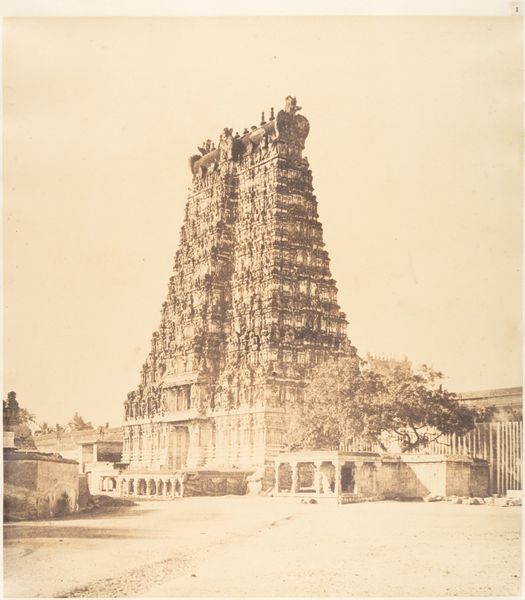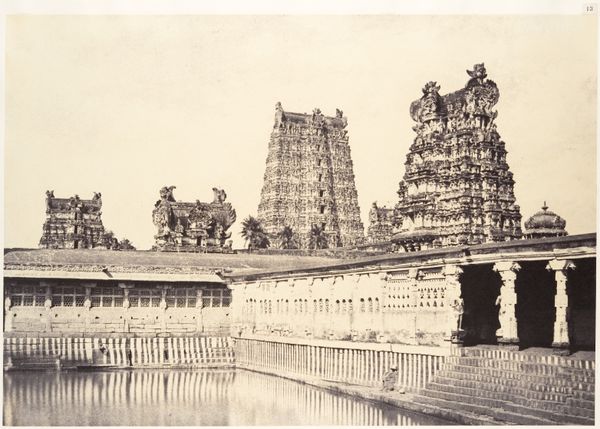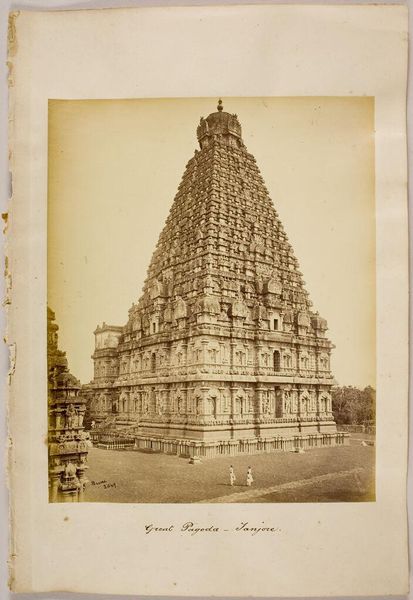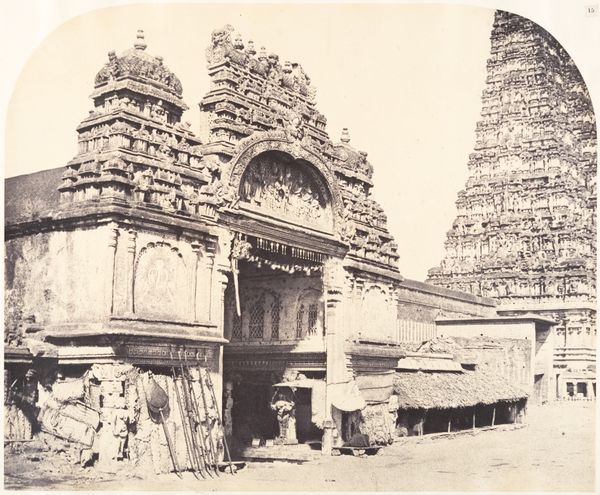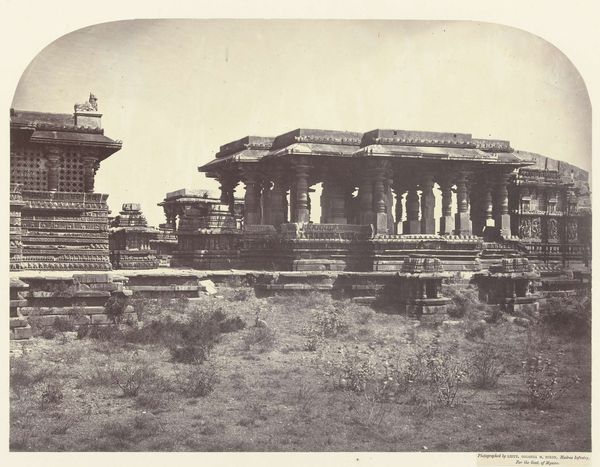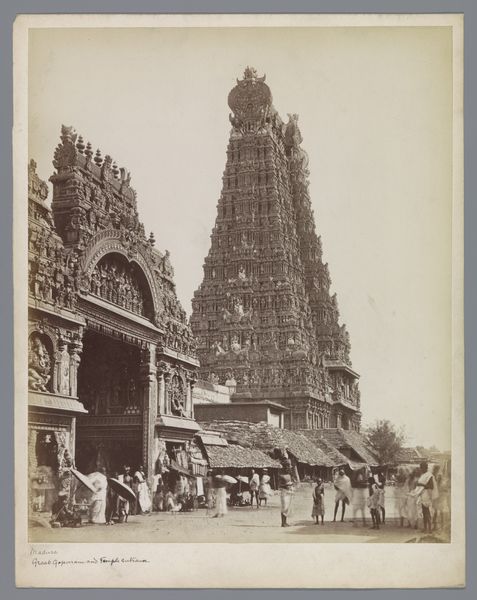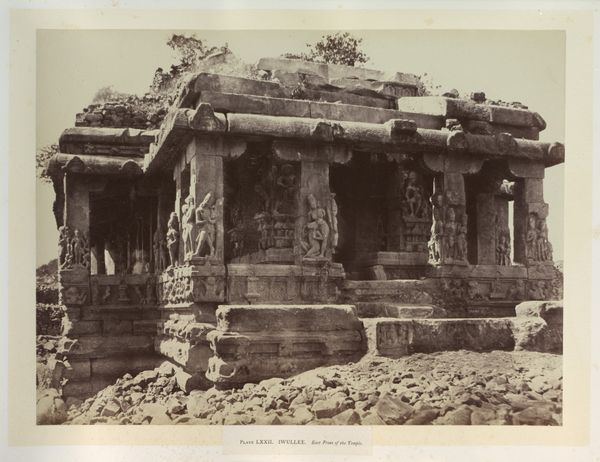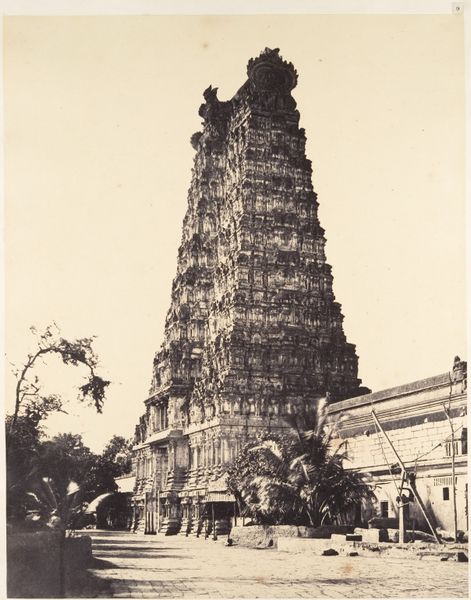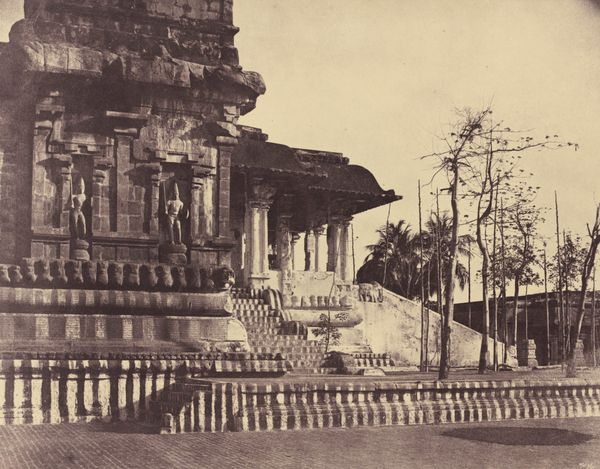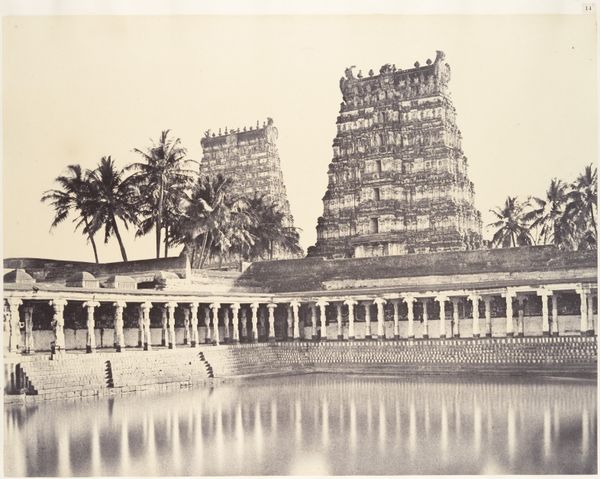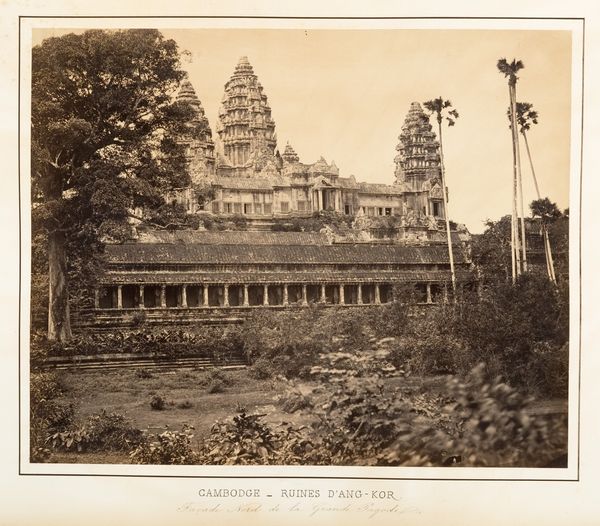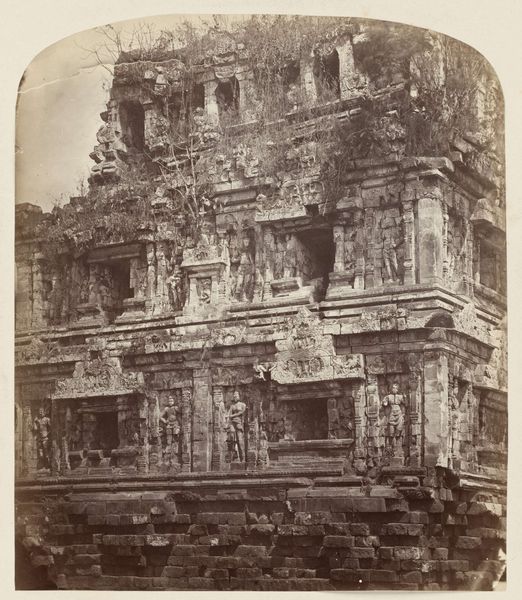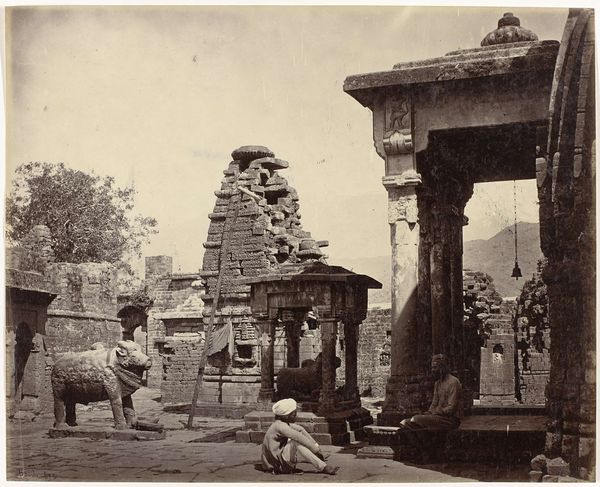
albumen-print, tempera, print, photography, albumen-print
#
albumen-print
#
16_19th-century
#
tempera
# print
#
asian-art
#
landscape
#
historic architecture
#
traditional architecture
#
photography
#
historical photography
#
19th century
#
albumen-print
#
historical building
Dimensions: 7 9/16 x 12 1/16 in. (19.21 x 30.64 cm) (image, sheet)13 3/16 x 16 3/4 in. (33.5 x 42.55 cm) (mount)
Copyright: Public Domain
This albumen print of the Rajarajesvara Temple was made in India in 1868 by Samuel Bourne. Bourne, a British photographer, made his name documenting the landscape and architecture of the British Raj. What does it mean to look at images like this today? Bourne's photography was commissioned and consumed by a colonial elite, helping to formulate ideas of British control and Indian subjugation. This image, with its dramatic architectural subject and lone Indian figure, creates meaning through carefully constructed visual codes. The temple represents the historical sweep of Indian culture, while the figure in the foreground shows the contemporary population. In their original context, images like this offered a seemingly objective view of India that was, in fact, carefully mediated. As historians, we need to understand the image’s original context, but also to recognize its place in a continuing history of colonialism. Research into Bourne’s biography and the archives of the British Raj can help us to understand this complex history.
Comments
No comments
Be the first to comment and join the conversation on the ultimate creative platform.
